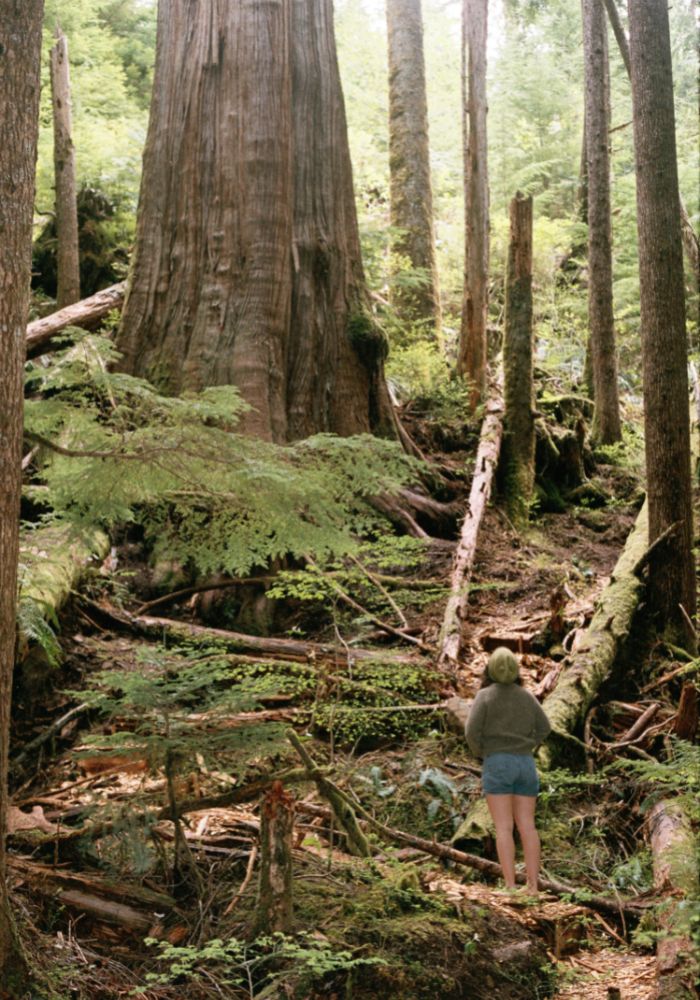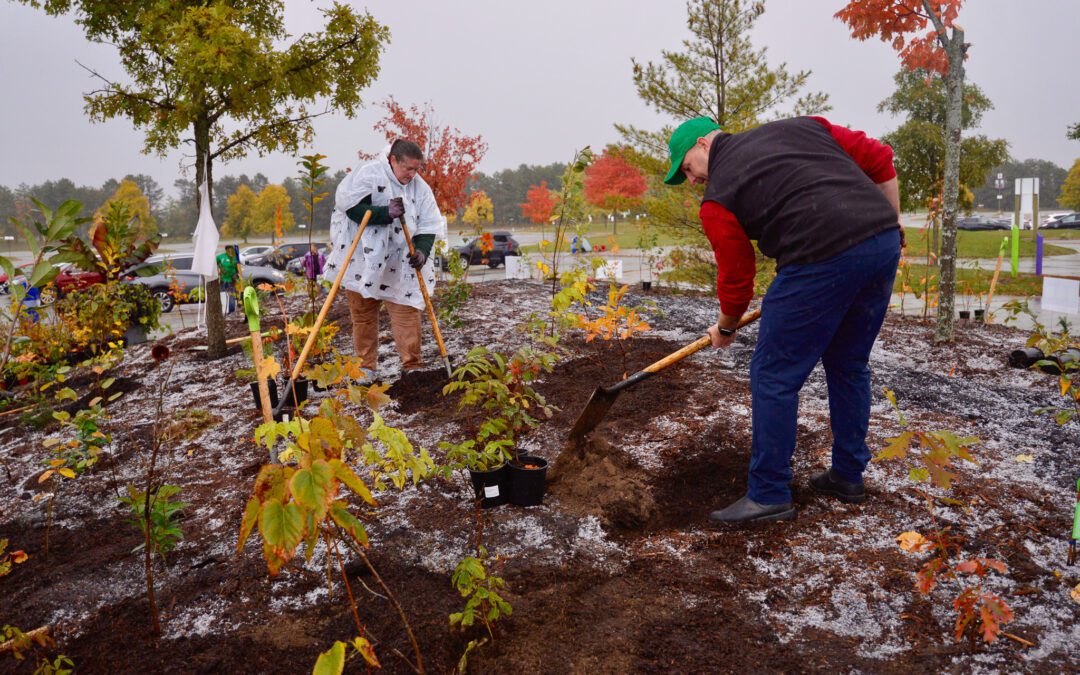Biodiversity is critical for the health and well-being of our planet, and Canada is home to incredibly diverse species and ecosystems. From the towering old growth forests of the Pacific Northwest to the vibrant Carolinian forests of southwestern Ontario, the natural beauty and ecological richness of this region are truly special.
However, Canada faces increasing challenges to its biodiversity due to industrialization, urbanization, and climate change. There are many ways in which we can advocate for, and take action towards protecting and expanding biodiversity — within urban, rural, and wilderness forest ecosystems.
Benefits of Forests
One of the most important benefits of forests is their role in mitigating climate change. They capture and store carbon from the atmosphere, helping reduce greenhouse gas emissions and limit global warming. Forests also play a key role in regulating water cycles, reducing soil erosion, and preventing floods. This is particularly important for Canadians as climate change is resulting in more frequent and severe weather events.
Forests provide habitat for a vast array of plant, animal, and fungal species, offering what these beings need to live and thrive. Many unique and important species can only be found in specific forest ecosystems.
Furthermore, forests hold significant cultural value for many communities, serving as important sites for traditional practices and ceremonies. They are also a place for solace and refuge; where one goes to ‘get away from it all’ and connect deeply with nature and oneself, promoting positive physical and mental health.
Opportunities for outdoor recreation, hunting, and tourism offered by forests provide a source of revenue, and support cultural connectedness.
Forests also provide important economic benefits, particularly for communities that rely on forest resources for their livelihoods. Timber, non-timber forest products, and other resources contribute to local economies. However, sustainable management is critical to ensure that these benefits are not depleted and can be enjoyed by future generations.
In Canada, forests cover nearly 40% of the country’s land area, making them a vital natural resource for the country’s biodiversity, economy, and way of life. However, forests in Canada face numerous challenges, including deforestation, habitat fragmentation, climate change, and development pressures.
Protecting Old Growth Forests in Canada

Old growth forest in British Columbia. Photo by: Emily Amon
One of the most important ways to protect biodiversity in Canada is through the conservation of old growth forests. Old growth forests are ecosystems that have been mostly undisturbed by colonial forces, and they are home to a wide variety of plant, animal, and fungal species that cannot be found elsewhere.
These forests are characterized by their ancient “mother” trees, which have stood for centuries, supporting an intricate web of life including endangered lichens, birds, and other mammals. They provide important ecosystem services, such as carbon sequestration, water filtration, and soil stabilization, and are also a source of cultural and spiritual value for many Indigenous communities.
Despite their ecological and cultural importance, old growth forests in Canada are under threat from logging, mining, and other forms of industrial development and land use conversion. According to a report by the Sierra Club of BC, less than three per cent of British Columbia’s original old-growth forests remain, and less than one per cent of those forests are protected. This loss is not limited to BC, with other provinces like Quebec and Ontario also experiencing substantial deforestation of old-growth forests.
In many parts of Canada, the protection of old-growth forests is not adequately addressed in forestry policy, leading to their continued fragmentation, degradation, and loss. In 2020, the Old Growth Strategic Review by the Government of British Columbia resulted in a series of recommendations to better protect old growth forests. But, much work is still to be done. Consider adding your voice to one of the many calls to action to protect old growth forests.
Growing urban forests in Canadian Cities
In addition to advocating for governments to take action towards conserving old-growth forests, it is also important to consider what actions can be taken closer to home. All Canadians have a role to play in increasing biodiversity in our cities, whether it’s by planting native flowers and grasses in your gardens, or by helping expand the urban tree canopy by planting trees and shrubs.
Trees and other green spaces are essential for urban biodiversity, as they provide habitat and food for birds, insects, and other wildlife. Furthermore, trees provide a host of ecological benefits to urban areas, including improving air quality, reducing noise pollution, increasing stormwater infiltration, and mitigating the urban heat island effect.
Unfortunately, not all urban areas have equal access to trees and green spaces. Low-income neighbourhoods and communities of colour are often disproportionately affected by the lack of urban greenery. This lack of access can have significant health and social consequences, such as increased rates of asthma and depression.
Mini Forests as a Strategy to Improve Tree Equity & Biodiversity
To address these and other issues, there has been a growing movement to plant mini forests in urban areas with greater need for green space.
A mini forest is a small area of land, typically between 100 and 1,000 square meters, planted with a dense mix of native tree species. These forests, modelled after the Miyawaki Forest methodology, are designed to mimic the structure and diversity of mature natural forests, providing habitat for a range of species.
Mini forests are planted with an average of 30 different locally appropriate native species that are spaced in such a way that they can encourage higher rates of growth through increased competition for canopy cover and shared mycelial networks.

Volunteers planting a mini forest at Toronto Zoo. Photo by: Madigan Cotterill, Canadian Geographic
One advantage of mini forests is that they can be planted in urban areas that are too small for traditional parks or green spaces, making them accessible choices for communities lacking in existing green spaces. They can also be used to bolster the biodiversity within existing parks or green spaces.
Another advantage of mini forests is that they are relatively low-maintenance. Once established, they require minimal watering or fertilization, making them a cost-effective way to increase urban tree canopy and biodiversity.
Beyond the environmental benefits described, planting mini forests can have significant social impacts. They can help increase community engagement and pride, provide opportunities for outdoor education and recreation, improve opportunities for spiritual and cultural connections to nature, reduce stress, and help build social connections between community members.
The National Mini Forest Pilot
This year, Green Communities Canada is leading a National Mini Forest Pilot. This initiative is a collaboration with Canadian Geographic, and Dougan and Associates through the Network of Nature. The Network of Nature is a national movement to engage Canadians to restore native biodiversity where they live. The Network of Nature provides resources such as a native plant database and find-a-nursery tool on their website.
The National Mini Forest Pilot program will see nearly 3,000 trees planted in cities such as Richmond, BC, Hamilton, ON, Guelph, ON, Markham, ON, and Toronto, ON in 2023.
This initiative is generously supported by the Federal Government’s 2 Billion Tree program, and will contribute to Canada’s goal of planting two billion trees by 2030. In 2024, we plan to scale up the project, focusing on supporting community-led urban plantings in locations that prioritize benefits to tree equity. If your organization is interested in taking part in our scale up application to the federal 2 billion tree program, respond to our survey here.
Conclusion
Biodiversity is crucial to the health of Canada’s ecosystems, and it is important to take steps to preserve and expand our forests, wherever they may be. This includes advocating for the protection of old growth forests from logging, and taking part in local efforts to increase urban tree canopy and biodiversity through the planting of mini forests and other strategies.
By working together, we can ensure Canada’s natural heritage is preserved from generation to generation and our communities continue to advance towards an equitable and green future.

Trackbacks/Pingbacks